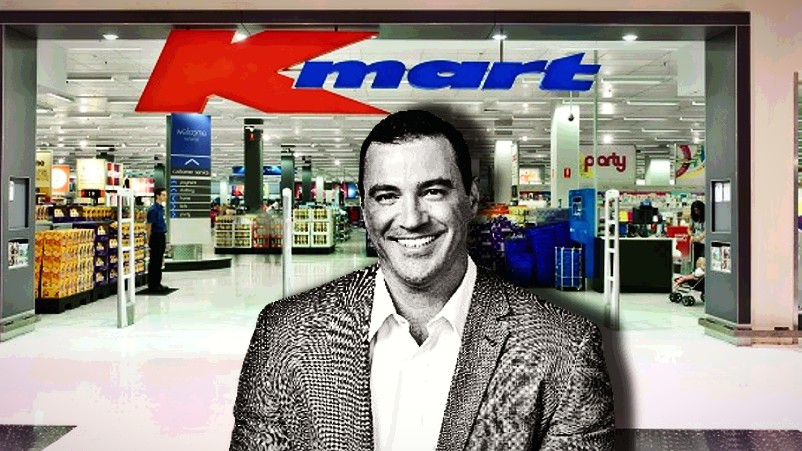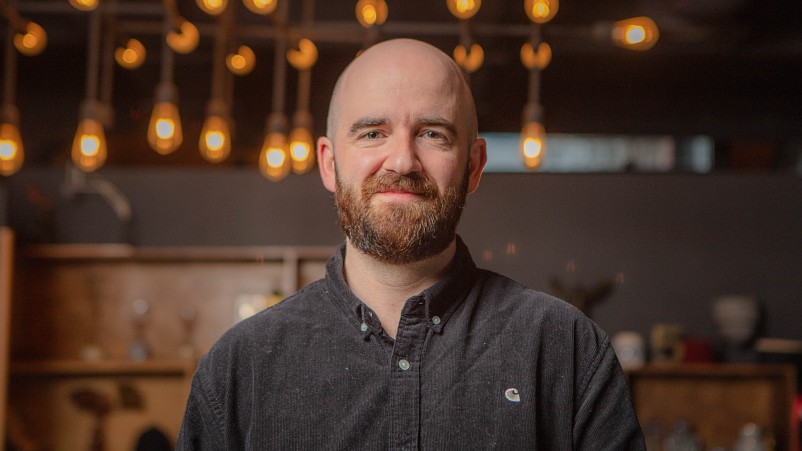Kmart delivers 20X improvement in engagement that results in sales while tripling its addressable online customer base from 2.5M to 7.5M in two years. Here's how

Brad Blyth, Kmart CIO: We anchored on that more than the data piece because that was the one we felt we could link to sales
Wesfarmers-owned Kmart has massively increased its consent-based addressable customer set, and built a model that has powered 20x improvement in engagements. It's a capability uplift – courtesy of a new tech platform built on Tealium's customer data platform (CDP) and the Braze Customer Experience platform – that pumped sales while driving experimentation that helped quantify the impact of personalised versus non personalised content. It also answered the vexed question of whether category upsell or category expansion was the best strategy to pursue. Now, Kmart is eyeing generative AI to drive even more effectiveness from its content play.
What you need to know
- Kmart now has an addressable database of 7.5 million consumers who consent to be contacted, up from 2.5 million just two years ago.
- And the mix of communication channels is more diverse. It's no longer just an email audience, it's expanded across mobile and web.
- Deploying new infrastructure based on the Tealium Customer Data Platform and Braze customer experience platform has also helped Kmart run a series of experiments that reveal the impact of personalisation on sales and helped determine whether to focus on category upsell or category expansion.
- The result is a poster child for marketing and IT cooperation, with CIO Brad Blyth describing CCO Bernard Wilson as his key partner in the project.
You're twice as likely to follow through to a purchase with a personalised experience.
Over two years, Kmart has increased its addressable market threefold and enhanced a content recommendation engine built upon Tealium and Braze to such an extent, it transformed a predicted 2X gain converting engagement to sales into a massive 20X gain. All this was achieved without the need for any additional investment.
According to Kmart and Target CIO, Brad Blyth, "We predicted how well we would go in the first year, and we actually doubled the result we wanted to see, which was engagement that resulted in sales. But then, for that same level of investment spend — in other words we didn't invest anymore — the model got smarter and we actually saw a 20 times benefit come in."
In addition, through a series of more than 80 experiments over two years, the retailer was able to quantify the impact of personalisation and determine whether frequency spending or category was the smarter play to drive sales. Spoiler alert: Expansion beats upsell.
The data and tech initiative that saw Kmart wire up a Tealium CDP to the Braze CX platform involved a partnership between marketing led by chief customer officer Bernard Wilson, and Blyth's IT function.
“The business problem we were really trying to solve was around customer engagement. A lot of people that shop with us don't understand everything that we sell," Blyth told Mi3. “The reason why we have that broad range of categories is to service our customers better through enhancing their lifestyle, while keeping everything within that really inflationary, sensitive cost environment.”
The challenge became educating customers about the full range of Kmart offerings.
“There were a couple of different ways we would measure that. How much do they spend with us? How much do they click on our website? How much data do we have about them? And is it an NPS score that they give us?” Blyth said.
Ultimately, the team landed on the concept of addressable customers. This referred to customers whom Kmart had details for so they could be contracted. Importantly, these customers had provided their consent to be contacted.
“We anchored on that more than the data piece because that was the one we felt we could link to sales," Blyth said. "But also it was one we felt helped keep us in check in terms of compliance and regulation.”
The results are impressive. Over a two-year journey, Kmart's addressable pool of customers grew from 2.5 million to 7.5 million, a 3X increase. The channel mix expanded significantly as well. Going from 2.5m primarily contactable via email, the retailer now has 7.5m customers who can be contacted via two or more channels across email, web and mobile.
The new tech platform also allowed Kmart to run a series of experiments to help it better communicate with customers. “Over the two-year period, we did 84 different variations of experiments across different channels," Blyth explained.
Among insights that fell out of that work was realisation personalised experience converted to sales at twice the rate of non-personalised experiences.
“You're twice as likely to follow through to a purchase with a personalised experience," Blyth said. In fact, personalisation helped grow online sales by 30 per cent, and while there aren’t metrics to track it, he added: “We know there's flow-on impact into stores.”
Content is king
Content makes a difference when you are talking to customers, continued Blyth. “Can they feel the product? Do they think it's going to look good on them?”
Kmart's goal is to tailor the content by determining what to say and which images to present to help customers understand and relate to its products.
“It’s a really complex space for our organisation because we sell so much stuff," Blyth commented. "If you're a bank and you're trying to sell a home loan, you show a picture of a nice house with people in it.”
But the environment for a retailer like Kmart is much more complex. “We actually have to try and figure out what you would look like in the product, then try and present that in a really clear way, so you can understand whether you like it or not.
“That's one that feels like a really great GenAI use case for us we want to try and figure out.”
The other question Kmart wanted to answer was whether to push category upsell or category expansion. “What we learned is that category expansion resonated better with customers than trying to upsell [them]," Blyth said.
What we learned is that category expansion resonated better with customers than trying to upsell [them].
Tech platform
The tech solution Kmart landed on starts with which products to recommend to which audiences. Data then gets centralised into the Tealium CDP, which is used to match the recommendations with audience sizes.
“Then it needs to figure out an end-to-end journey," said Blyth. “In other words, do those recommendations make sense based on where you are in terms of your buying cycle? For instance, are you visiting our website but haven't quite purchased yet? Or did you put something in your cart, but then left your session and now you're coming back?"
Tealium coordinates the end-to-end journey then pushes out the dynamic content, either into Braze, the customer experience platform, or through a third party.
“Braze essentially coordinates the contact and it can do this in one of four ways - although in Kmart’s case, really there are only three,” Blyth said.
- Firstly, Braze can ‘penalise the customer’ with a ‘buy this, or you're going to miss out' approach – something Kmart does not do, said Blyth.
- Then it can inform: 'Did you see this?'
- Next, it can reward the customer: 'Buy this and get this'
- Or can it be emotive? Are we showing this to you in a way where you have an emotional connection?
“Then we try to choose the frequency in the channel. Braze helps us with the coordination of this. We provide the content, and it helps us figure out how to get something in real-time versus delayed to that audience and which channel to use," Blyth said.
Key functional partnership between CMO and CIO
The message that marketing and IT need to work closely together has clearly taken root at Kmart. Blyth describes his customer chief counterpart as his key partner in the project. Both the digital and marketing teams report to Wilson as the CCO.
“We went through the experiences that we wanted to create and there were basically two buckets; automated marketing, and contextual experiences," he said. “The contextual experiences was really the digital team, and they were looking at how they tailor the digital experience. The marketing team was interested in how they communicate the different seasonal promotions we have and contact the customers that way.”



